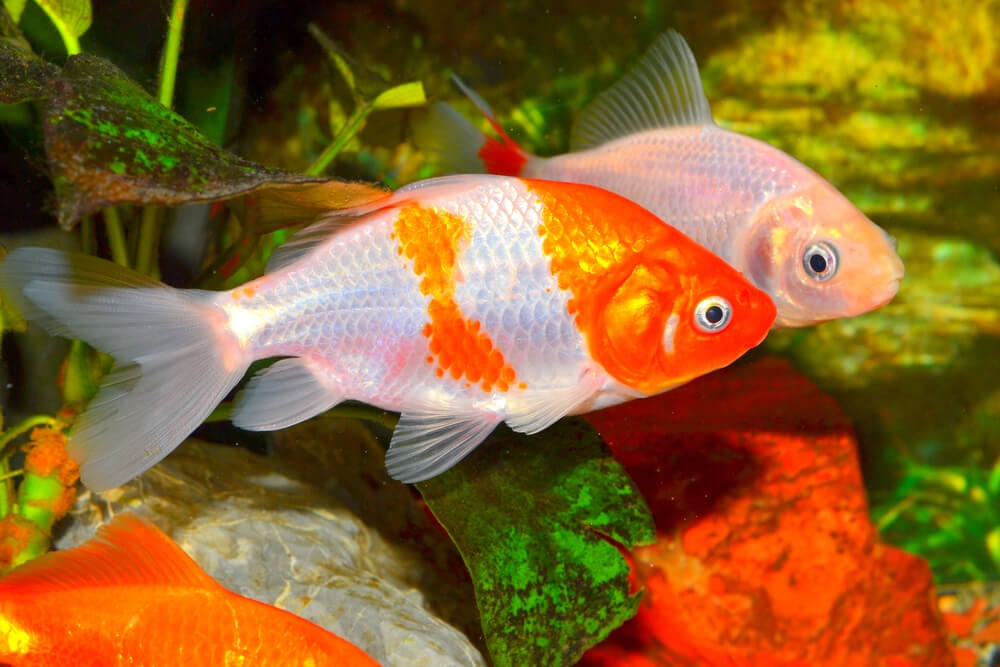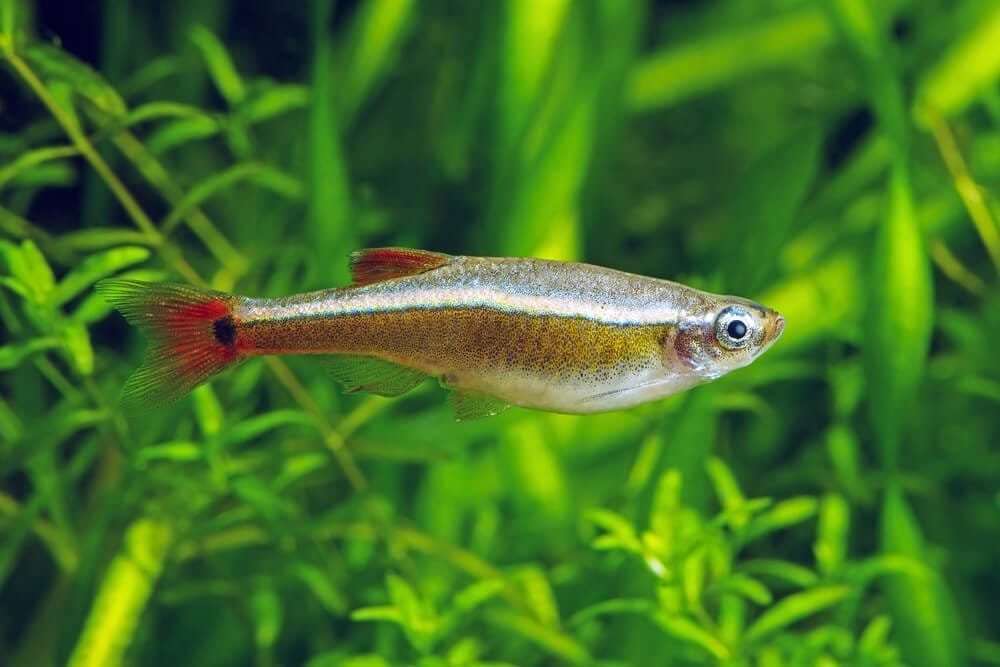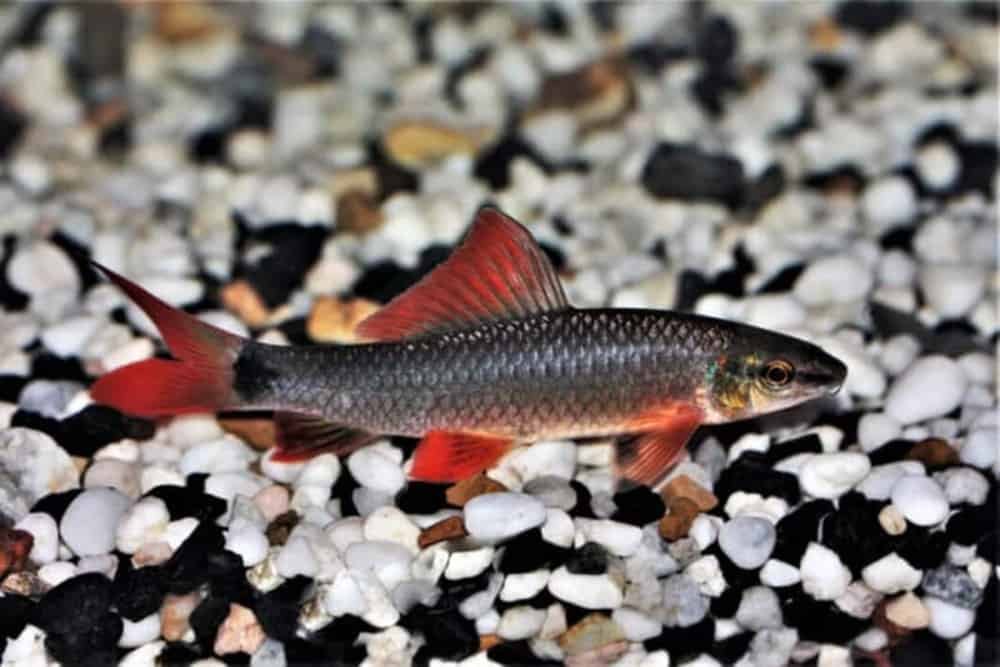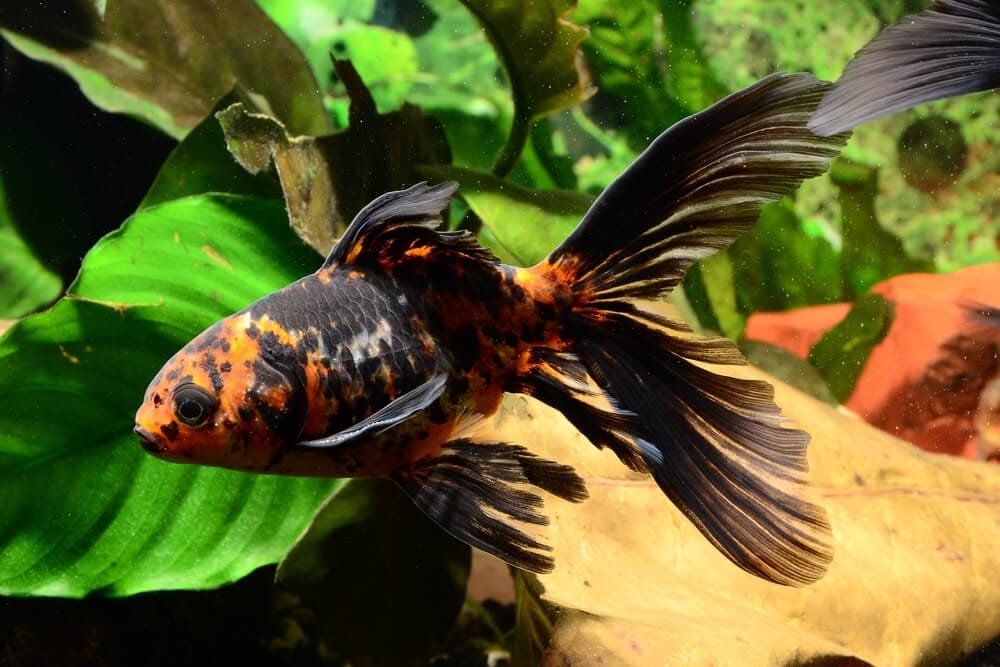Kissing Gourami: Tank Requirements and Behavior Insights

Imagine a mesmerizing fish with vibrant colors and an affectionate nature – that’s the Kissing Gourami for you! This unique species gets its name from its distinctive behavior of puckering its lips together, resembling a kiss, which it uses to express its emotions and establish bonds with other fish. With its stunning appearance and charming personality, the Kissing Gourami is an absolute delight to have in your aquarium. Whether you’re an experienced fish enthusiast or just starting out, this article will give you a glimpse into the fascinating world of these delightful creatures.
Physical Characteristics
Body shape and size
The Kissing Gourami, also known as Helostoma temminckii, is a unique and attractive freshwater fish that can reach an average size of 12-16 inches (30-40 cm) in length. It has a laterally compressed body shape, which means it is wider from side to side than it is from top to bottom. This body shape allows the Kissing Gourami to navigate easily through the water and gives it a sleek appearance. Despite its larger size, this fish has a docile nature and is a stunning addition to any aquarium.
Coloration
One of the most striking features of the Kissing Gourami is its vibrant coloration. They typically display shades of pink, orange, and gold, with some individuals exhibiting a combination of these colors. The body is adorned with shimmering scales that catch the light, adding to the visual appeal of this species. Additionally, the fins may have contrasting colors, such as black or red, which further enhance the overall appearance. The beautiful coloration of the Kissing Gourami makes it a popular choice among aquarium enthusiasts.
Distinctive Features
The Kissing Gourami gets its name from its unique mouth structure, which sets it apart from other fish species. It has a specially adapted mouth that allows it to “kiss” or lock lips with other Kissing Gouramis during various social interactions. This behavior is believed to be a form of communication or play among individuals. Apart from the distinctive mouth, Kissing Gouramis have long, flowing fins that add elegance to their appearance. These fins, combined with their captivating coloration, make them a visually stunning fish to observe in the aquarium.
Habitat
Native range
Kissing Gouramis are native to Southeast Asia, specifically Thailand, Malaysia, and Indonesia. They can be found in slow-moving rivers, streams, and flooded areas, where they have adapted to both standing and flowing waters. These habitats often have dense vegetation, providing the fish with adequate cover and shelter. The warm and tropical climate of their native range is reflected in their preferred water conditions.
Preferred habitat
In the wild, Kissing Gouramis prefer habitats with calm, slow-moving waters that are densely vegetated. This allows them to hide amongst the plants and feel secure. They are also known to inhabit areas with muddy bottoms, as they are bottom-dwellers and rely on the substrate for scavenging food. The presence of aquatic plants, such as Java fern or Amazon sword, is highly beneficial as it offers them places to explore and provides some shade, which the fish appreciate.
Water conditions
When recreating their natural habitat in an aquarium, it is important to provide Kissing Gouramis with suitable water conditions. They thrive in warm water temperatures ranging from 75°F to 82°F (24°C to 28°C). The pH level should be slightly acidic to neutral, ideally between 6.5 and 7.5. Additionally, it is essential to maintain excellent water quality by regularly monitoring and adjusting the levels of ammonia, nitrite, and nitrate. Kissing Gouramis are adaptable to a range of water hardness, but a moderate level is recommended, around 5-15 dGH.
Behavior
Social behavior
Kissing Gouramis are known for their peaceful and social nature, making them suitable for community aquariums. They prefer to live in groups or pairs, as they are highly social fish that thrive in the presence of their own kind. This social behavior extends beyond their own species, and they generally get along well with other peaceful fish species. Kissing Gouramis are not typically aggressive, but occasional territorial disputes can occur, especially during breeding periods or if the tank is overcrowded. Providing ample hiding spots and visual barriers, such as plants or decorations, can help reduce potential conflict.
Breeding behavior
Breeding behavior in Kissing Gouramis is fascinating to observe. When they reach sexual maturity, males and females prepare for the breeding process by developing vibrant colors and physical changes. The male’s mouth becomes more pronounced, and the female develops a rounder belly. During courtship, the male initiates the mating ritual by nudging the female and displaying his vibrant colors. Once the female is ready, she releases her eggs, and the male fertilizes them externally. The eggs are then gathered by the male in his mouth and carried in a bubble nest, where they will hatch shortly after.
Feeding behavior
Kissing Gouramis are omnivorous, meaning they consume both plant matter and small invertebrates. In the wild, their diet consists mainly of algae, aquatic vegetation, and insect larvae. In the aquarium, they can be fed a varied diet that includes high-quality flake or pellet food suitable for omnivorous fish. Supplementing their diet with fresh or frozen foods such as brine shrimp, bloodworms, or daphnia is also beneficial. It is important to note that overfeeding can lead to health issues and reduced water quality, so it is essential to provide them with appropriate portions.
Tank Requirements
Tank size
Due to their larger size, Kissing Gouramis require a spacious tank to thrive. A minimum tank size of 55 gallons (208 liters) is recommended for a single Kissing Gourami, with an additional 20 gallons (76 liters) for each additional fish. This ample space allows them to swim freely and reduces the chances of territorial disputes. It is important to consider their potential growth when choosing an aquarium, ensuring they have enough room to reach their maximum size.
Aquarium setup
When setting up an aquarium for Kissing Gouramis, it is crucial to recreate a natural environment that mimics their native habitat. Providing ample plants and decorations helps create hiding spots and adds visual interest to the tank. The use of live plants, such as Anubias or Java moss, not only enhances the aesthetics but also provides additional oxygen and improves water quality. Adding driftwood or rocks can create caves and crevices for the fish to explore and establish territories.
Water parameters
Maintaining suitable water parameters is essential for the health and well-being of Kissing Gouramis. Water temperature should be kept between 75°F and 82°F (24°C to 28°C), with a pH level ranging from 6.5 to 7.5. It is important to regularly test the water and monitor the levels of ammonia, nitrite, and nitrate to ensure optimal conditions. Adequate filtration is crucial, and a canister filter or hang-on-back filter with biological and mechanical media is recommended to maintain water quality and provide sufficient oxygenation.
Tank Mates
Compatible species
Kissing Gouramis are generally peaceful and can coexist with a variety of compatible fish species. Some suitable tank mates for Kissing Gouramis include peaceful community species such as tetras (e.g., neon tetras, cardinal tetras), peaceful barbs (e.g., cherry barbs), guppies, swordtails, mollies, and other peaceful gourami species. These fish should have similar requirements in terms of water parameters and temperament to ensure a harmonious and stress-free environment.
Incompatible species
While Kissing Gouramis are generally peaceful, there are some fish species that may not be suitable tank mates. It is best to avoid aggressive or fin-nipping species, such as certain cichlids (e.g., African cichlids), tiger barbs, or fish with long, flowing fins, as they may be seen as potential targets for aggression or harassment. It is important to research the compatibility of any potential tank mates before introducing them to the aquarium to prevent any conflicts.
Community tank considerations
When creating a community tank with Kissing Gouramis, it is essential to consider the overall balance between species. Providing ample hiding spots, visual barriers, and adequate swimming space helps reduce stress and potential conflicts. Additionally, ensuring proper feeding habits and maintaining good water quality are crucial for the overall health and well-being of all the fish in the community tank.
Feeding
Dietary requirements
Kissing Gouramis are omnivorous fish and require a balanced diet that includes both plant-based and protein-based foods. They have a preference for vegetable matter, such as algae and plant matter, but they also require protein from sources like small invertebrates. Providing a varied diet is crucial to meet their nutritional needs and keep them healthy. High-quality flake or pellet food formulated for omnivorous fish serves as a good staple diet, while supplementing with fresh or frozen foods like brine shrimp, bloodworms, or daphnia provides essential nutrients and encourages natural feeding behaviors.
Feeding schedule
Establishing a regular feeding schedule is important to avoid overfeeding or underfeeding. Kissing Gouramis can be fed once or twice daily, with an amount of food that they can consume within a few minutes. It is important to observe their feeding behavior and adjust the quantity accordingly, ensuring no excess food remains uneaten and pollutes the water. Offering a variety of foods throughout the week helps prevent nutritional deficiencies and adds enrichment to their diet.
Types of food
To maintain a balanced diet, Kissing Gouramis can be fed a combination of dry and wet foods. High-quality flake or pellet food formulated for omnivorous fish can serve as the staple diet. Additionally, offering live or frozen foods such as brine shrimp, bloodworms, daphnia, or chopped vegetables like spinach or peas provides essential nutrients and adds variety to their diet. It is important to avoid overfeeding and to provide portion sizes appropriate for the size and age of the fish.
Diseases
Common diseases
Like any fish, Kissing Gouramis are susceptible to certain diseases. Some common diseases that may affect them include ich (white spot disease), fin rot, bacterial infections, and parasitic infestations. These diseases can be caused by various factors, including poor water quality, stress, and inadequate nutrition. Regular monitoring of water parameters, proper tank maintenance, and a balanced diet are crucial in preventing the occurrence of diseases.
Prevention and treatment
Preventing diseases in Kissing Gouramis involves providing optimal tank conditions and maintaining good water quality. This includes regular water testing, appropriate filtration, and ensuring a balanced diet. Quarantining new fish before introducing them to the main tank also helps prevent the spread of potential diseases. If a disease does occur, prompt treatment is necessary. Depending on the specific disease, treatments may involve water additives, medication, or isolation of affected fish. It is important to consult with a veterinarian or experienced aquarist for proper diagnosis and treatment guidance.
Signs of illness
When Kissing Gouramis are unwell, there are several signs that indicate illness. These include lethargy, loss of appetite, abnormal swimming behavior, changes in coloration, visible lesions or sores, fin deterioration, or unusual spots or growths on the body. Any of these signs could indicate an underlying health issue, and immediate attention should be given to diagnose and treat the fish properly. Regular observation and monitoring of their behavior and appearance allow for early detection of potential illnesses.
Breeding
Reproduction process
Breeding Kissing Gouramis can be a rewarding experience for aquarium enthusiasts. The reproductive process begins with the males exhibiting vibrant colors and initiating courtship behavior. During this time, the male will nudge the female and display his colors to attract her attention. Once the female is ready to spawn, she releases her eggs, and the male fertilizes them externally. The male then gathers the eggs in his mouth and creates a bubble nest, where he carefully guards and cares for the eggs until they hatch.
Breeding tank setup
Setting up a suitable breeding tank is essential for successful Kissing Gourami breeding. A separate tank of at least 20 gallons (76 liters) is recommended, with appropriate filtration and heating. The water conditions should be similar to the main tank, with a temperature maintained around 78°F (25.5°C) and a pH of 6.5 to 7.0. Providing ample floating plants, such as Indian fern or water lettuce, allows the male to build a bubble nest and makes the female feel secure during the breeding process.
Caring for fry
Once the eggs hatch, the male will release the fry from the bubble nest. At this point, it is important to remove the male to prevent him from eating the fry. The fry should be fed infusoria or commercially available fry food until they are large enough to consume baby brine shrimp or crushed flake food. Providing a suitable growing environment with proper filtration and water quality is crucial for the healthy development of the fry. As they grow, they can be gradually moved to a larger grow-out tank to provide them with more space.
Maintenance
Regular water changes
Regular water changes are essential for maintaining optimal water quality and a healthy environment for Kissing Gouramis. It is recommended to perform weekly water changes of about 20-30% to remove accumulated toxins, excess nutrients, and waste products. During water changes, it is important to use a suitable water conditioner to neutralize chlorine or chloramine, as these can be harmful to fish. Vacuuming the substrate during water changes helps remove any uneaten food or debris, preventing the buildup of harmful bacteria.
Filter maintenance
Proper maintenance of the aquarium filter is necessary to ensure its efficient functioning and prevent the accumulation of debris. Regularly cleaning or replacing filter media, such as sponge or activated carbon, helps maintain good water quality. However, it is important to avoid replacing all the filter media at once, as this can disturb the beneficial bacteria colonies that aid in biological filtration. Following the manufacturer’s guidelines for filter maintenance and monitoring its performance regularly ensures that the tank remains clean and the water quality is optimal.
Tank cleaning
Besides water changes and filter maintenance, regular cleaning of the aquarium itself is important for the overall cleanliness and health of the tank. Algae can accumulate on the glass, decorations, or substrate, and it is recommended to remove it manually or use appropriate algae-eating fish or invertebrates to control it. Additionally, removing uneaten food, decayed plant matter, or any debris from the tank helps maintain water quality and prevent the buildup of harmful bacteria. It is important to use aquarium-safe cleaning tools and avoid the use of harsh chemicals that can harm the fish.
Interesting Facts
Formation of kissing behavior
The unique mouth structure of the Kissing Gourami and the behavior associated with it has fascinated researchers and aquarists alike. The modified shape of their jaws and lips allows them to engage in the kissing behavior for which they are named. This behavior is believed to be a form of communication or play among individuals. It involves the fish locking lips and pushing against each other, often followed by a release and repetition of the behavior. The exact purpose and meaning of this behavior are still not fully understood, but it adds to the charm and intrigue of this species.
Longevity
When well cared for in a suitable environment, Kissing Gouramis can live for many years. They have been known to live for up to 15 years or even longer, with proper care and a balanced diet. Providing adequate space, maintaining good water quality, and offering a varied diet contribute significantly to their overall health and longevity. However, it is important to note that individual lifespans can vary, and genetic factors, as well as the overall quality of care provided, can impact the lifespan of these fish.
Popularity in the aquarium trade
Kissing Gouramis have gained popularity in the aquarium trade due to their vibrant colors, distinctive mouth structure, and peaceful nature. Their unique appearance and interesting behavior make them captivating additions to freshwater aquariums. However, it is important to note that due to their larger size and specific care requirements, they may not be suitable for every aquarist. It is recommended to research their needs and ensure appropriate tank size and compatibility before adding them to an aquarium. With proper care and attention, Kissing Gouramis can provide years of enjoyment and beauty in an aquatic environment.






